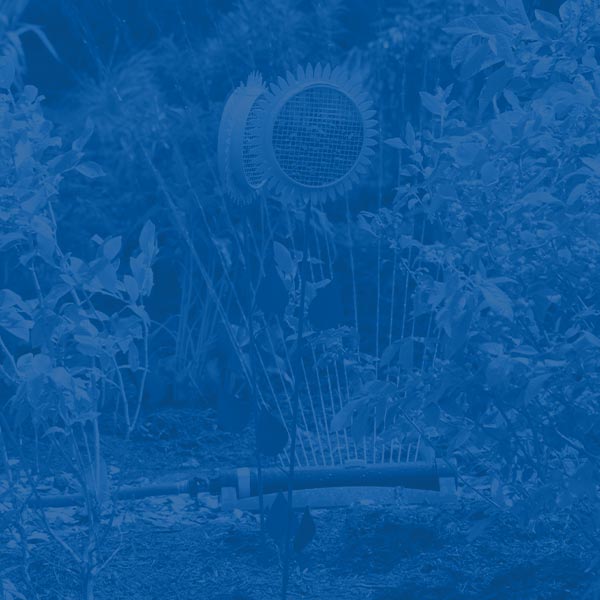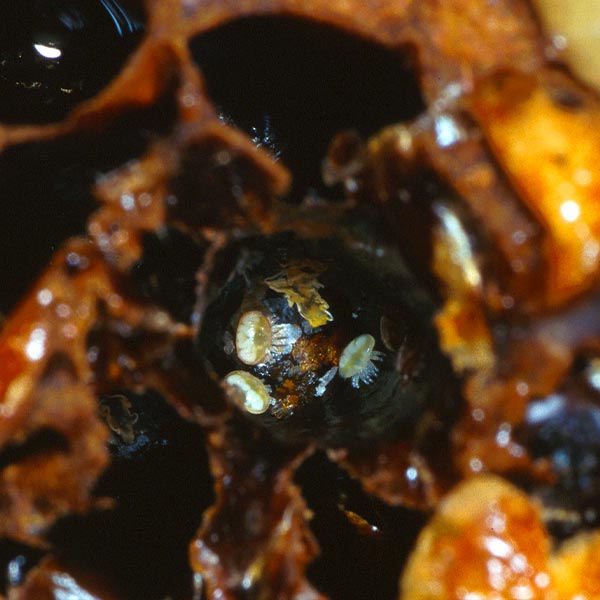Pollinators
Each of us depends on pollinators in a practical way to provide us with the wide range of foods we eat.
Pollination services from honey bees and other insects provide the backbone to ensuring our diets are diverse and plentiful with fruits, nuts, and vegetables. In all, there are over 100 crops grown in the United States that depend on pollination. USDA supports the critical role pollinators play in agriculture through research and data collections, diagnostic services and pollinator health monitoring, pollinator habitat enhancement programs, and pollinator health grants.
View Secretary Perdue's National Pollinator Week Proclamation (PDF, 67.7 KB)
-
Agricultural Marketing Service (AMS) conducts a monthly National Honey Report, which collects prices paid of extracted and unprocessed honey, price by honey type, primary nectar source visited, and estimates the export and import of honey with major trading partners.
Animal Plant Health Inspection Service (APHIS) safeguards honey bees against the entry, establishment, and spread of economically and environmentally significant pests, and facilitates the safe trade of agricultural product. Information on the National Honey Bee Pests and Diseases Survey, Exotic Bee and Bee Mite ID guides, outreach videos on the parasitic Varroa mite and introductions to beekeeping can be found at this site.
Agricultural Research Service (ARS) Bee Research Laboratories are located across the country. These labs look at a wide range of issues that impact bee health. The primary labs include:
- Beltsville, Maryland Bee Lab focuses on a wide range of bee pests and diseases, and offers a free Bee Disease Diagnosis Service of pests and diseases for beekeepers across the United States.
- Baton Rouge, Louisiana Bee Lab focuses on honey bee breeding, genetics, and physiology research.
- Logan, Utah Bee Lab studies the biology, management, and systematics of pollinating insects.
- Tucson, Arizona Bee Lab focuses on improved nutrition and Varroa control.
Farm Service Agency (FSA) administers the Conservation Reserve Program (CRP), which implements long-term rental contracts with growers to voluntarily remove environmentally sensitive land from agricultural production, and to plant species that will improve environmental health and quality, such as for pollinator and wildlife habitat.
National Agricultural Statistics Service (NASS) conducts statistically based surveys of beekeepers, including the Bee and Honey Inquiry Survey and the Colony Loss Survey.
National Institute for Food and Agriculture (NIFA) provides grants to universities, including Land-Grant institutions, to address high priority pollinator research. They also work to provide funding to U.S. Land-Grant institutions and counties through the Cooperative Extension System to conduct information and technology transfer to stakeholders on pollinator health.
Natural Resources Conservation Service (NRCS) offers more than three dozen conservation practices that can benefit pollinators. Although many of these practices target improving grazing lands or reducing soil erosion, small modifications to the practices can yield benefits to pollinator species. The shared link provides an overview of NRCS conservation work for pollinators and pollinator conservation and habitat enhancement resources.
Office of Pest Management Policy (OPMP) analyses policy questions that address questions related to the interface of crop pest management and pollinator health and works closely with the USDA’s National Agricultural Statistic Service on data collections to better understand pollinator Best Management Practices. The link provides an exhaustive summary of crops that are attractive and/or pollinated by both honey bees and other bees in the United States.
Risk Management Agency (RMA) administers the Emergency Assistance for Livestock, Honey Bees, and Farm-Raised Fish (ELAP) program which provides financial assistance to eligible producers of honey bees due to disease and certain adverse weather events or loss conditions. ELAP assistance is provided for losses not covered by other disaster assistance programs authorized by the 2014 Farm Bill and the Bipartisan Budget Act of 2018.
U.S. Forest Service (USFS) is highly engaged in the protection of pollinators via sound management of and research to support managed lands. This link provides information on topics such as pollination, plant pollination strategies, types of pollinators, pollinator friendly practices, and gardening for pollinators.
-
Department of Defense Pollinator Page
Department of Energy Pollinator Protection Initiative
Department of Transportation Pollinator Page
National Park Service Pollinator Page
U.S. Bureau of Land Management Pollinator Page
U.S. Environmental Protection Agency Pollinator Page
U.S. Fish and Wildlife Service Pollinator Page
U.S. Geological Survey, Native Bee Inventory and Monitoring Lab
Pollinator Fact Sheets, News and Blogs

What's all the buzz about?
See the impact of USDA's efforts focusing on pollinator health, crop production, and conservation.
View the infographic (PDF, 1.5 MB)

Pollinator Facts
An overview of why pollinators are so important to our agricultural industry and our lives.
Read the fact sheet (PDF, 1.5 MB)

Pollinators at a Crossroads
Bees and other pollinators, including birds, bats, butterflies, moths, flies, wasps, beetles, and small mammals, play a critical role in our food production system.

Horned-Face Bees Sublet in a Honey Bee Colony
Shedding new light on strategies used to ensure survival of two very different pollinators.

Farmers are Helping to Protect Working Wings on Working Lands
Fruits and veggies give us the well-balanced diet we need to live healthy lifestyles, and pollinators are our suppliers.

NASS Honey Bee Production Highlights
Overview of major statistics on honey bees collected by USDA’s statistical service.
-
Helping Honey Bees Make It Through Winter With Early Cold Storage
Putting honey bees into early indoor cold storage in October rather than November increases their chances of surviving the winter.
The Value of Birds and Bees
Pollinators benefit America’s working forests, farms, and ranches.
Protecting Pollinators from a New Threat – First-Ever U.S. Sightings of Asian Giant Hornet
Asian giant hornets are extremely large and equipped with relatively massive mandibles (teeth).
Scientists Probe Pollinator Survival
Shedding new light on strategies used to ensure survival of two very different pollinators.
Highlights
Access USDA resources on enhancing agricultural pollinator health and conservation.







Gallery
View our collection of pollinators, plants and apiarists.





















